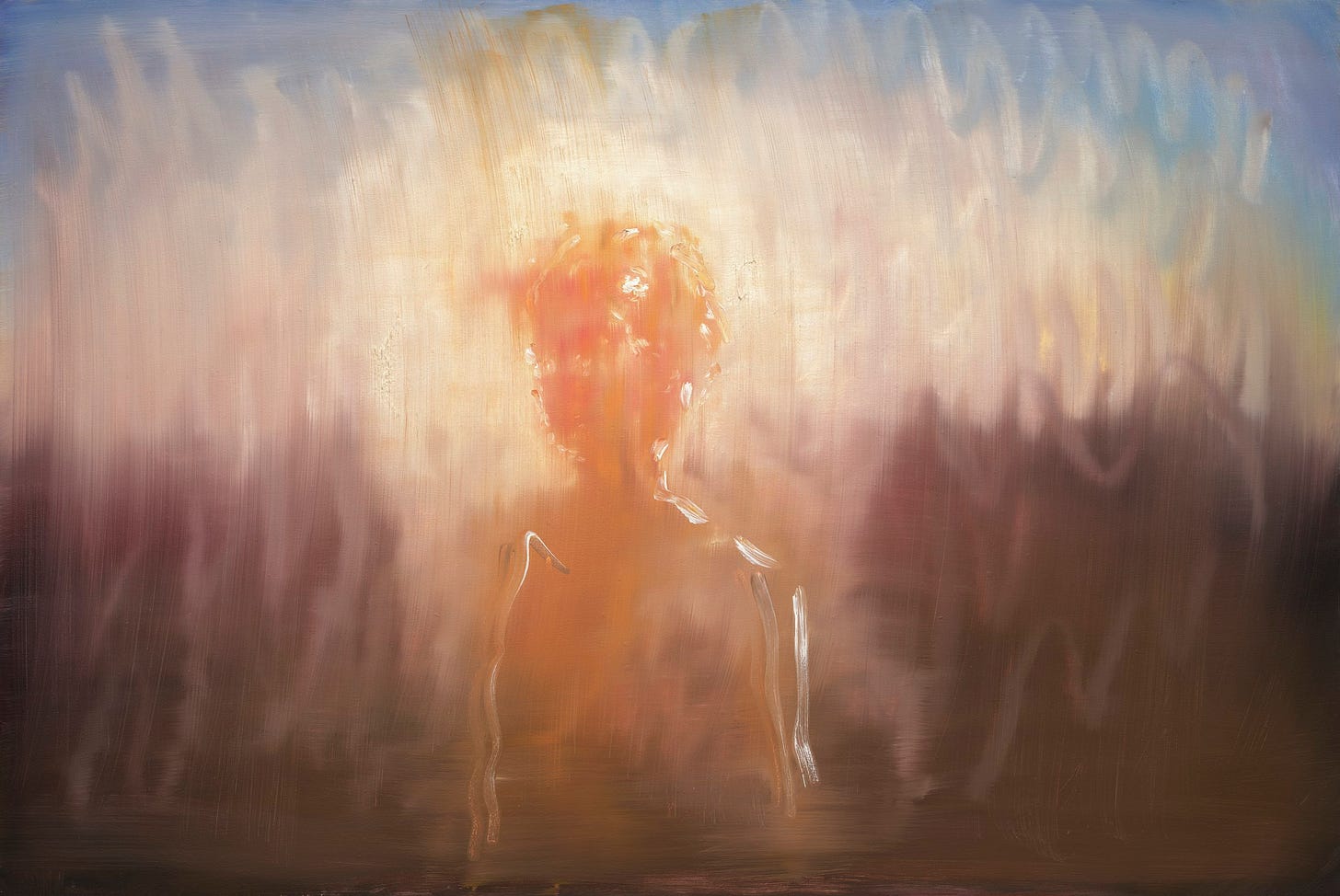Some Art in Autumn
There have been several forays into London over the past few weeks.
Firstly, a whistle-stop trip to see William Foyle’s recent exhibition, ‘Pannonian Paintings’ with Randle White Fine Art. The gallery was a pool of calm in the midst of the city, the colours of the large canvases glowing. These works follow on from the artist’s Irish Paintings, which used a single image of a sunset taken near Slemish mountain in County Antrim as the backdrop to a series of paintings inspired by poetry, music and religion. That landscape belonged to his maternal grandmother, and in the new paintings the sunset gives way to an image taken from a hillside overlooking the Great Hungarian Plain where he was researching the family history of his paternal grandmother. This location - now in north-eastern Serbia - was once part of a vast province of the Roman Empire known as Pannonia…
The real subject of the Pannonian Paintings is the figure of Christ - the exhibition contains two series: ‘Images of Christ’ and ‘Images of the Crucifixion’. Pages of preparatory drawings exploring this imagery imprint the forms on the artist’s mind; he then spends time meditating in order to connect to a truer, more personal sense of Jesus, before embarking on a painting which he completes in one sitting. It is surely this practice that imbues the finished works with such a sense of spiritual serenity. The subject matter is not used didactically, but lends a Christian inflection to the landscape; in some of the canvases Christ’s image almost disappears as if it were a trick of the light. These are religious paintings for a more secular age - giving a powerful sense of meaning to the world around us.
A half-term outing a few weeks later saw us take a spontaneous trip to the National Portrait Gallery. It was exciting to see the newly renovated building and to travel through history from the third floor down. Child B, armed with pencil and mini-gallery guide, paused to sketch Katherine Parr with her furry sleeves and pearls dripping from pendants; then she pounced on an audio guide about Louise de Keroualle with her young black attendant carrying coral and a conch shell full of pearls. I admired comparatively austere portraits of Elizabeth Garrett Anderson by Sargent and Radclyffe Hall by Charles Buchel - and Doris Zinkeisen’s striking self-portrait in a Chinese shawl. There were men too, of course, but we were particularly drawn to the Great Women (nothing to do with the jewels at all…)
Then we headed over to Piccadilly, and through Burlington Arcade where Child B declared that she would like to buy some jewellery. We went swiftly into the Royal Academy, where I thought that Michael Craig-Martin’s neon-bright canvases of simplified everyday objects would appeal to a five-year-old. The first room - of early-career conceptual art involving buckets and bottles of water suspended or balanced on a tipping shelf - bemused us; I found it difficult to explain why the clipboards and pencils hanging from the wall were not there for her to draw on, but were in fact ‘ART’. The ensuing sense of disappointment did not dissipate until we reached the immersive digital installation, ‘Cosmos’, near the end. Here all the children seemed to have congregated, and lay transfixed on the carpeted floor as the black walls danced and span with Craig-Martin’s trademark objects to a hypnotic musical score. As Craig-Martin has commented, ‘It’s a summation of the cosmos, of my cosmos, of what I’ve done.’
His work has always seemed to me a sort of new Pop Art for the nineties, presenting ready-made objects in a flattened, two-dimensional format, and in garish, non-realistic colours. The paintings combining text and image were more interesting, as the objects in outline - all corresponding to an initial letter - seemed to weave and float in and out of the solid lettering, giving a sense of depth. This, writes the RA, is intended to invite ‘the viewer to consider the relationship between abstract concepts and the tangible things in our lives.’
But since returning home I have mainly been thinking how much every street I see suddenly looks like a painting by John Atkinson Grimshaw (if you can ignore the cars and telegraph wires) - suddenly all the leaves have fallen and lie in fiery drifts and the clock change has brought misty mornings and dusks that seem to linger from mid-afternoon.










